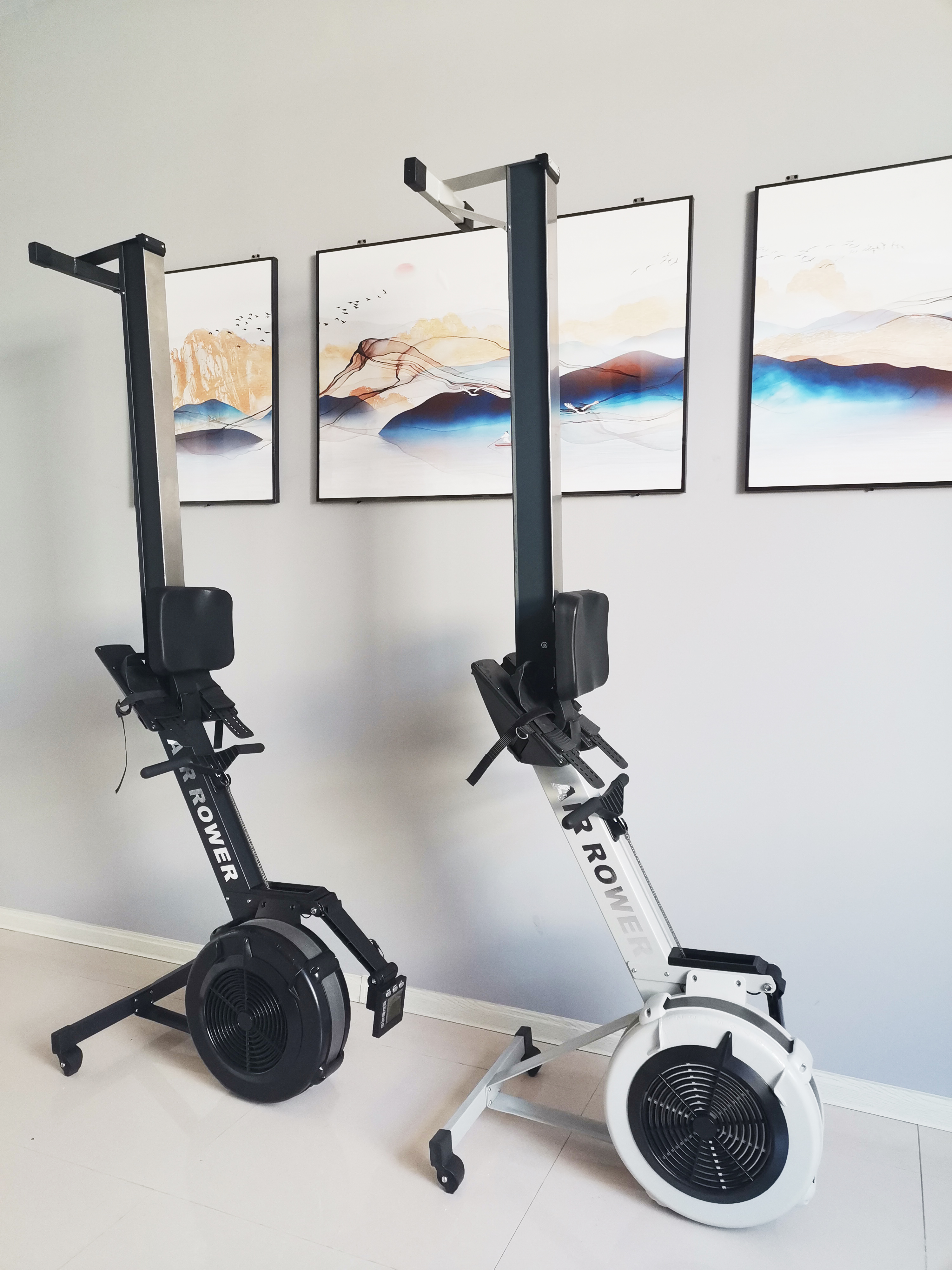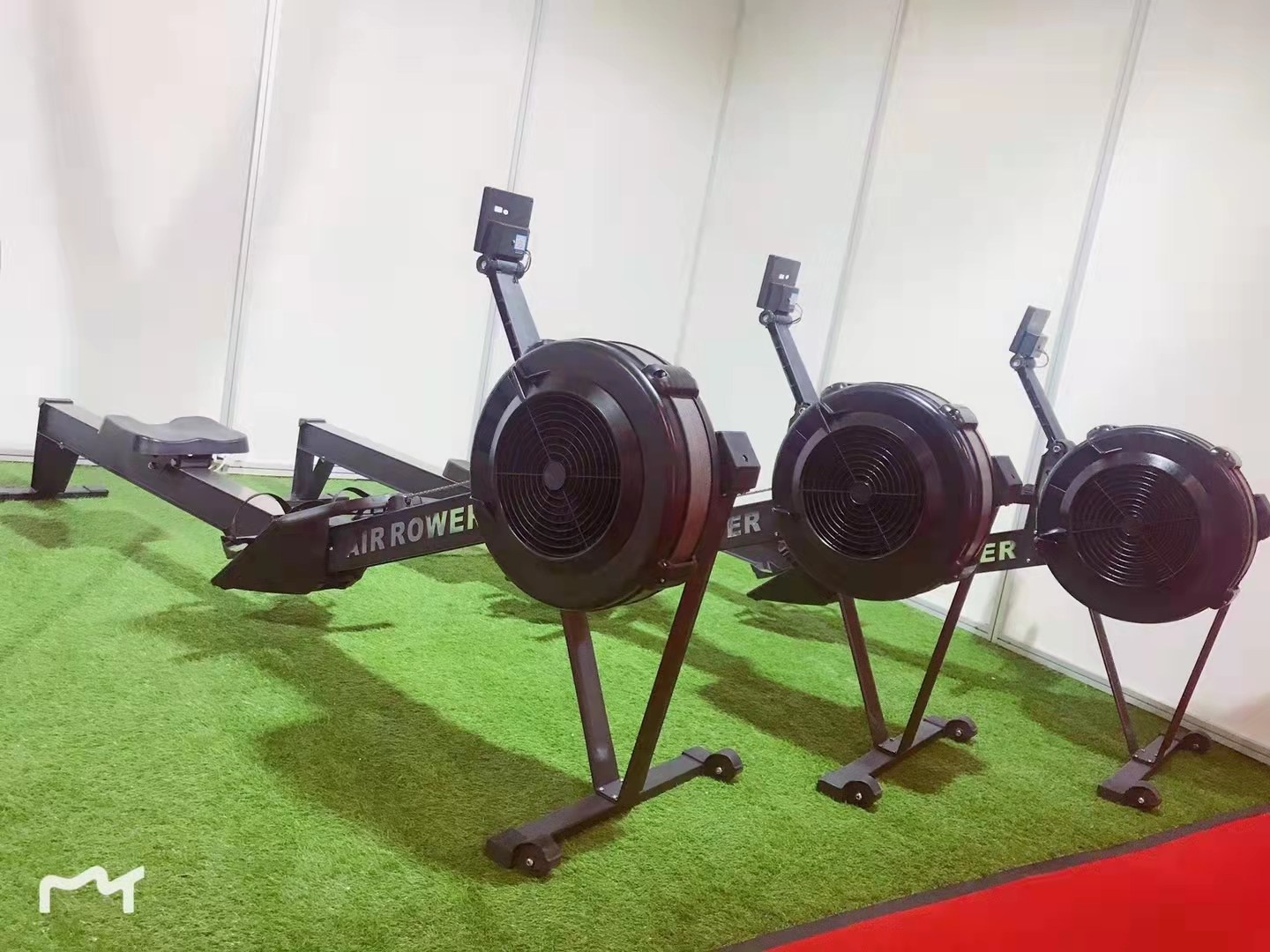Wind resistance rowing machine is an efficient fitness equipment
advantage
Good overall exercise effect: When used, the hands and feet cooperate with each other, and various parts of the body participate in the exercise, which can fully exercise the muscles of the whole body, including the legs, arms, back, abdominal core muscles, etc.
Low risk of sports injuries: Compared to sports that have a greater impact on joints such as running and rowing, rowing machines have less joint damage and are suitable for people of different ages and physical conditions. They can even be used as rehabilitation training equipment after injury or surgery.
Diverse training methods: Depending on different training objectives and individual physical conditions, parameters such as rowing speed, resistance, and time can be adjusted to develop diverse training plans, such as endurance training, strength training, interval training, etc.
Simulated real rowing experience: During the movement, resistance is proportional to the speed of rowing, which is closer to the real rowing experience.
Small footprint: Compared to water resistance rowing machines, wind resistance rowing machines have a smaller footprint and are more suitable for household use.
shortcoming
Loud noise: During operation, the fan blades will produce a certain amount of noise.
High maintenance costs: Fan blades need to be replaced regularly.
Applicable scenarios
Home fitness: With a small footprint, it can be placed in living rooms, balconies, and other spaces, unaffected by weather conditions, and can be exercised at any time.
Youth high school entrance examination physical training: It can exercise about 80% of the main muscle groups in the whole body, improve strength, endurance, and coordination, and help teenagers achieve better results in multiple sports test items in the high school entrance examination.
Professional training: Many professional athletes use its precise data monitoring function, such as paddle frequency, speed, mileage, calorie consumption, etc., which can provide scientific basis for training, help adjust training plans, and improve training effectiveness.
Precautions for use
Master the correct posture: such as keeping the back straight and avoiding arching or excessive backward tilting; Maintain tension in the muscles of the arms, legs, and back; Grasp the handle of the rowing machine with both hands, keeping the arms perpendicular to the body and the palms facing downwards.
Adjust the appropriate resistance: Beginners are advised to start with low resistance and gradually increase it. Do not blindly pursue high resistance to avoid causing sports injuries.
Pay attention to breathing coordination: Generally, during paddling, exhale when leaning forward and inhale when leaning backward to maintain even and smooth breathing.
Wear comfortable equipment: It is recommended to wear comfortable sportswear and sports shoes for training.
Adequate warm-up and stretching: Perform 5-10 minutes of warm-up exercises before training, such as running, skipping rope, etc; Stretch and relax after training to relieve muscle fatigue.
